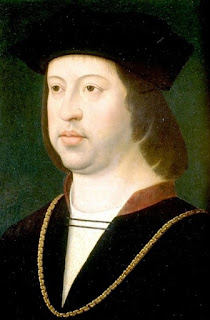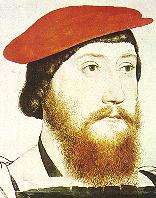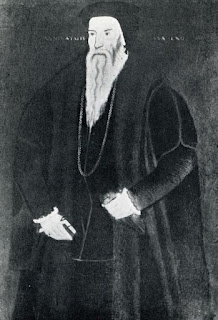So as we move into August we start to think about sunny
days, warm weather, the sound of leather on willow and lazy days. It’s Britain
so let’s amend that to cloudy days, mild weather and the sound of rain on
covers or sky’s so blue it’s unbelievable and it’s too hot to move. All this
means its holiday season. Jetting off to far of places or staying in the UK,
although this year it is most likely staying at home, annoying perhaps but if
it gets rid of the Rona then it will be 100% worth it. Which ever you do it
will be really different from the holidays of our ancestors.
Let’s start off with the obvious. May of our ancestors will
never have had a holiday in their lives. They probably only had Sundays as a
day of rest, but probably worked at home on this day.
So off to the seaside then. The main places to develop in
the Victorian era as holiday places were Blackpool, Scarborough, Ramsgate and
Brighton. Llandudno and Rhyl were the places to go in Wales.
Now we don our short and t shirts for a beach outing but
think of our ancestor. They wore their everyday clothes or even their Sunday
best. Men in 3 piece suits and women in so many layers they could virtually
stand up without needing their legs. Can you imagine how hot they were?
 |
| Victorians at the beach |
They may have worn a straw bonnet instead of the normal hat
but that would have been the only nod to the beach.
So they needed to cool down. What better way than an ice
cream. No cone and lovely flavours for our ancestors though. You got a penny
lick. Now this was a solid glass which had a small indentation on the top which
would hold a small amount of ice cream. You paid your penny, ate your ice cream
and gave the glass back. If you were really lucky the glass may have been
rinsed before you got it, but not always. Think of it like hundreds of people
sharing a spoon, gross.
Perhaps a donkey ride across the beach? These rides began in
the Victorian era and continue to this day at Blackpool amongst others. The
wind in their hair as the donkey trotted (well slowly walked) along the sand.
The best way to cool off was probably a dip in the sea. What
better way. Not for me, seaweed, crabs, fish no thank you. Apparently you’re
not supposed to squeal and run out of the sea claiming something touched your
foot! Why? But not just a normal dip in the sea for our ancestors there was
etiquette to consider. You had to be correctly dressed.
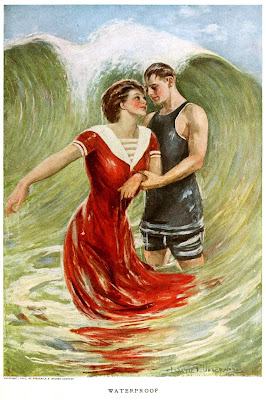 |
Victorian bathing attire |
Ladies wore full length dresses to begin with made from a
non transparent fabric and weighted at the hem so it wouldn’t float up and show
an ankle, the horror! Later into the Victorian era women began to wear a pair
of bloomers with a short dress over the top. Modesty at all times. Men began by
wearing what looked like woollen long johns from ankle to wrist. Over time
these became shorter and looked more like a modern ladies racing swimsuit. I’ve
got a photo somewhere of my Grandpa in a thigh length bathing suit that when it
got wet stretched out of all shape.
But I hear you cry how did they change? Well the answer was one of two ways. There was the bathing machine. This was effectively a garden shed on wheels. You went inside and got changed and then stepped out in you bathing attire. Some were wheeled from the promenade to the sea so you stepped out into the sea and then when you were done you were returned to dry land. It was usually only the rich who were taken into the sea. You could also use a sort of beach tent thing. We had one. It was like a huge towel with a hole in the top for your head. You simply got changed underneath it. Surfers use them these days to get out of wetsuits. Another way ladies got around the need for a changing room was to use the bell dress type thing.
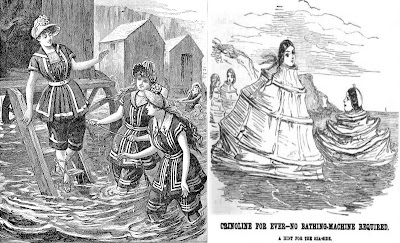 |
The modesty aids at the beach |
I’ll be honest it looks more like a drowning aid than a
swimming dress.
So this summer when you’re lying on the beach in your chosen
attire think of your Victorian ancestors and be grateful no to have to wear a
suit or crinoline.


